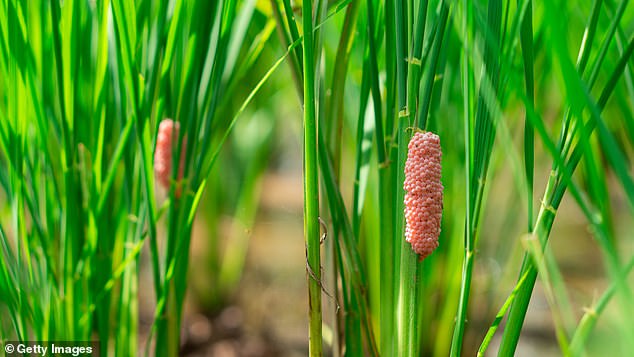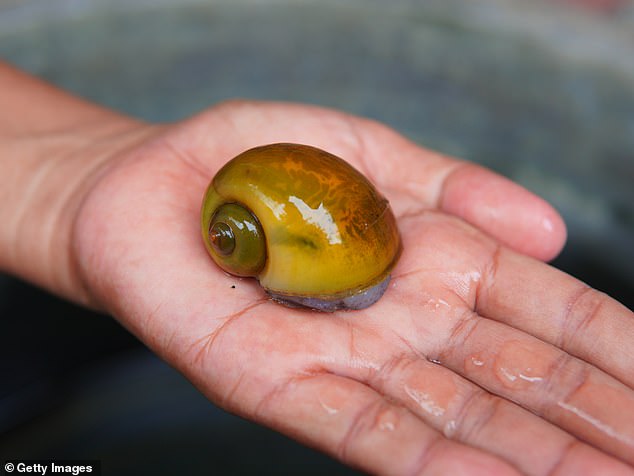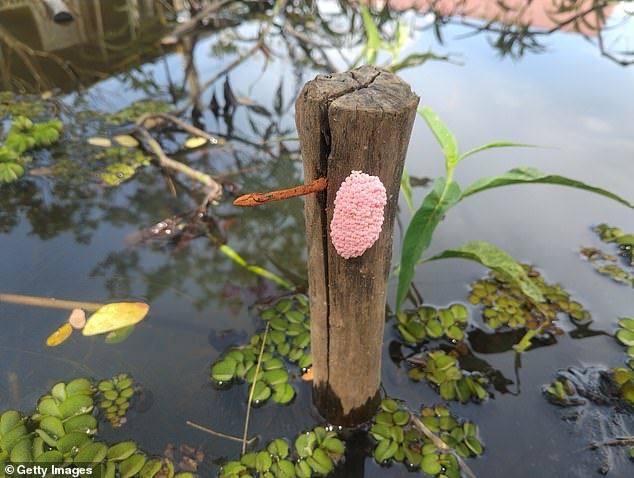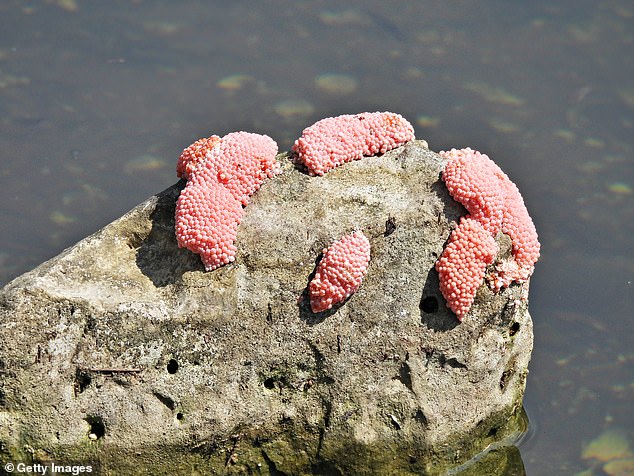Americans are being urged to destroy strange, sticky pink blobs appearing across Florida, as officials warn they pose a threat to both humans and local ecosystems.
These vivid pink clusters are egg masses laid by invasive apple snails from South America, fast-growing species that can cause serious ecological damage once hatched.
The Florida Fish and Wildlife Conservation Commission (FWC) has warned residents not to handle the eggs with bare hands, especially around the eyes, nose, or mouth.
The slime coating the eggs may carry harmful bacteria and parasites that can infect sensitive areas. Instead, officials are asking the public to crush the clutches using protective footwear.
Florida is home to multiple types of apple snails, including the native Florida apple snail. But the state also hosts four exotic species from South America: the island apple snail, channeled apple snail, spike-topped apple snail, and titan apple snail.
Health officials are particularly concerned about the channeled apple snail, which can carry rat lungworm, a parasite capable of causing a rare but potentially deadly form of meningitis when humans consume raw or undercooked snails.
The US Geological Survey reports these egg masses are commonly spotted in central and southern Florida waterways, including Lake Okeechobee, the St. Johns River, and Everglades National Park.
Invasive apple snail populations have also taken hold in Georgia, Texas, Louisiana, and parts of California, where they’ve become serious pests in agricultural zones.

Since 2013, these snails have spread to at least 29 watersheds in 38 of Florida’s 67 counties

Florida is battling an invasion of exotic apple snails, mainly the island, channeled
Since 2013, these invasive snails have spread across 38 out of 67 counties in Florida and been found in at least 29 different watersheds.
They can grow up to six inches long, lay distinctive bright pink egg masses, and have an aggressive appetite for aquatic vegetation.
The exotic snails damaged crops, raised utility costs, lowered home values, and hurt fishing, tourism, and outdoor activities.
Unlike Florida’s native apple snail, these invaders threaten to push out local species and disrupt ecosystems by eating aquatic plants essential for native fish, birds, and water quality.
The FWC said in a public alert: ‘If they fall into the water, they will still hatch.’
The agency added that the only way to prevent more snails is to completely crush the egg sacs.
The invasive apple snail is listed by the FWC as one of the ‘world’s worst invaders’ due to the extensive damage it causes to crops and natural habitats.
A 2021 study estimated that this kind of damage and cleanup has costed North America over $26 billion annually since 2010.

Exotic apple snail have damaged crops, raised utility costs, and lowered home values

The invasive apple snail is listed by the FWC as one of the ‘world’s worst invaders’
Moreover, globally, the cost of invasive species has reached $1.288 trillion over the past 50 years.
Florida’s native apple snail grows slowly and lays fewer eggs. In contrast, invasive snails mature in two to three months and produce large egg clutches.
Native apple snail eggs are pale salmon-colored, contain 20 to 80 large, pea-sized eggs, and turn white before hatching, according to the US Geological Survey.
The invasive island apple snail can lay up to 2,000 tiny eggs packed in layered clutches several inches long, while the invasive channeled apple snail lays up to 800 slightly larger eggs per clutch.
The huge number of eggs and fast reproduction make these snails hard to control.
Identifying apple snails apart by their shells is tricky, since they all looks alike. However, Native Florida apple snails are smaller, about two to three inches long, with flat-topped shells.
Their shell colors range from yellow to brownish-black. Some exotic snails show bright yellow-orange, yellow-green, or copper tones, a result of aquarium breeding. Their foot tissue also varies in color, from yellow to gray.
Most invasive apple snails arrived in Florida through the pet trade. Federal law bans moving apple snails between states, but the FWC stresses pet owners should never release them into the wild.
